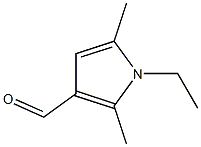Laccase
Synonym(s):Benzenediol:oxygen oxidoreductase;Laccase from Aspergillus sp.;Laccase, Coriolus versicolor, cross-linked enzyme aggregate;Oxygen oxidoreductase;Uroshiol oxidase
- CAS NO.:80498-15-3
- Empirical Formula: C9H13NO
- Molecular Weight: 151.20562
- MDL number: MFCD00131475
- EINECS: 420-150-4
- Update Date: 2024-12-18 14:08:57

What is Laccase?
The Uses of Laccase
Laccases are multicopper-oxidases (benzenediol:oxygen oxidoreductase, EC
1.10.3.2) that are able to oxidize phenolic substrates (e.g. 2,6-dimethoxy-phenol),
aromatic amines (e.g. 1-hydroxybenzotriazole), or polycyclic aromatic hydrocarbons
(e.g. anthracene) . The oxidation of the substrate occurs via a oneelectron
reduction and is accompanied by a reduction of molecular oxygen to
water.
Most laccases are of fungal origin, but they also occur in bacteria, insects,
and plants. Due to the broad substrate range of laccases, their possible
industrial usage is widespread. Nevertheless, only few applications have been
commercialized up to now, mostly in the textile industry. In the food and feed
sector, laccases have been evaluated for different applications, such as the stabilization
of beverages, the reduction of off-flavors, the improvement of wheat
dough, and the usage of laccases as biosensors in the food processing industry.
Off-flavors in wine may occur due to microbial conversion of phenolic compounds
present in the wine itself or in the cork stoppers. In a commercial product
from Novozymes called Suberase, laccase is used for polymerization of phenolic
compounds in the cork, which act as precursors for malodors, such as pentachlorophenol
or 2,4,6-trichloroanisol.
In apple juice, addition of laccase reduced the amount of the phenolic offflavors
2,6-dibromophenol, guaiacol, and a-terpineol. Several studies used
laccases to increase the stability of apple juices by polymerization of phenols and
their subsequent removal by ultrafiltration methods. A positive side effect is
the decrease of molecular oxygen in the juice due to its consumption by laccases.
Nevertheless, desired phenols might also be oxidized; thus, the sensory attributes
and nutritional value might be altered.
The polymerization reactions catalyzed by laccases can also be used to improve
the shade of food, such as the coloration of tea-based products. In the bakery industry, laccase might be used together with proteases or xylanases to improve
the dough quality. It was proposed that laccases oxidize ferulic acid attached to the
arabinoxylan present in cereal flour. The obtained phenolic radicals can undergo a
nonenzymatic reaction, resulting in cross-linked feruloylated arabinoxylans.
In oat flour-based bread, the usage of laccase increased the loaf-specific volume
and decreased the crumb hardness. Contradictory, in another study, laccase
alone decreased the specific volume and increased the crumb hardness. A
combined usage of laccase with xylanase improved again the oat flour bread
properties.
The Uses of Laccase
Laccase from Trametes versicolor has been used:
- to assess the use of four laccase-producing strains in waste water treatment
- in laccase assay
- in screening the lignols
The Uses of Laccase
Laccase is polyphenol oxidase found in many plants, fungi and microorganisms. Laccases may be useful in enzymatic biofuel systems, teeth whitening, textile dyeing, and in other applications that require the removal of oxygen .
General Description
Laccase EC 1.10.3.2, a glycoprotein, is an extracellular multicopper enzyme and is considered as a metal. Laccase is widely distributed in fungi and also found among the higher plants, bacteria and insects.
Flammability and Explosibility
Not classified
Biochem/physiol Actions
Laccase oxidizes aromatic and nonaromatic compounds. Various compounds are used for detecting laccase production. These include guaiacol, syringaldazine and polymeric dyes like remazol brilliant blue-R. Laccase is involved in lignin degradation and thereby has industrial as well as food applications. Laccase is commonly used for delignification, dye bleaching, paper processing, waste detoxification, textile dye transformation, plant fiber modification and ethanol production.
Biotechnological Applications
Lee et al. isolated and identified an extracellular laccase-producing strain of Y. lipolytica from soil. Extracellular laccase (YlLac) was purified by anionexchange and gel filtration chromatography. YlLac is a monomeric glycoprotein with 14 % carbohydrate content and a molecular weight of 67 kDa. It showed a higher catalytic efficiency toward 2,20-Azino-bis (3-ethylbenzthiazoline-6-sulfonic acid) (kcat/Km = 19.3 s-1 lM-1) and 2,6-dimethoxyphenol (kcat/Km = 13 s-1 lM-1) than any other reported laccases. This enzyme was able to oxidize phenolic compounds of pretreated rice straw. The use of YlLac for the removal of cellulase inhibitory compounds from biomass slurries is a promising approach for improving the efficiency of biorefineries (Lee et al. 2012).
Properties of Laccase
| Density | 1.37[at 20℃] |
| vapor pressure | 0.004Pa at 25℃ |
| storage temp. | 2-8°C |
| form | powder |
| color | slightly beige |
| Water Solubility | 100g/L at 25℃ |
| EPA Substance Registry System | Laccase (80498-15-3) |
Safety information for Laccase
| Signal word | Danger |
| Pictogram(s) |
 Health Hazard GHS08 |
| GHS Hazard Statements |
H334:Sensitisation, respiratory |
| Precautionary Statement Codes |
P261:Avoid breathing dust/fume/gas/mist/vapours/spray. P284:Wear respiratory protection. P501:Dispose of contents/container to..… |
Computed Descriptors for Laccase
Laccase manufacturer
Apollo ingredients Pvt Ltd
New Products
Tert-butyl bis(2-chloroethyl)carbamate 4-Methylphenylacetic acid N-Boc-D-alaninol N-BOC-D/L-ALANINOL N-octanoyl benzotriazole 3-Morpholino-1-(4-nitrophenyl)-5,6-dihydropyridin- 2(1H)-one Furan-2,5-Dicarboxylic Acid DIETHYL AMINOMALONATE HYDROCHLORIDE 1,1’-CARBONYLDIIMIDAZOLE R-2-BENZYLOXY PROPIONIC ACID 1,1’-CARBONYLDI (1,2-4 TRIAZOLE) N-METHYL INDAZOLE-3-CARBOXYLIC ACID (2-Hydroxyphenyl)acetonitrile 4-Bromopyrazole 5-BROMO-2CYANO PYRIDINE 5,6-Dimethoxyindanone 5-broMo-2-chloro-N-cyclopentylpyriMidin-4-aMine 2-(Cyanocyclohexyl)acetic acid 4-methoxy-3,5-dinitropyridine 1-(4-(aminomethyl)benzyl)urea hydrochloride 2-aminopropyl benzoate hydrochloride diethyl 2-(2-((tertbutoxycarbonyl)amino) ethyl)malonate tert-butyl 4- (ureidomethyl)benzylcarbamate Ethyl-2-chloro((4-methoxyphenyl)hydrazono)acetateRelated products of tetrahydrofuran








You may like
-
 80498-15-3 Laccase 99%View Details
80498-15-3 Laccase 99%View Details
80498-15-3 -
 Laccase from Rhus vernicifera CAS 80498-15-3View Details
Laccase from Rhus vernicifera CAS 80498-15-3View Details
80498-15-3 -
 Laccase from Agaricus bisporus CAS 80498-15-3View Details
Laccase from Agaricus bisporus CAS 80498-15-3View Details
80498-15-3 -
 Laccase from Trametes versicolor CAS 80498-15-3View Details
Laccase from Trametes versicolor CAS 80498-15-3View Details
80498-15-3 -
 1975-50-4 98%View Details
1975-50-4 98%View Details
1975-50-4 -
 14714-50-2 (2-Hydroxyphenyl)acetonitrile 98+View Details
14714-50-2 (2-Hydroxyphenyl)acetonitrile 98+View Details
14714-50-2 -
 118753-70-1 98+View Details
118753-70-1 98+View Details
118753-70-1 -
 733039-20-8 5-broMo-2-chloro-N-cyclopentylpyriMidin-4-aMine 98+View Details
733039-20-8 5-broMo-2-chloro-N-cyclopentylpyriMidin-4-aMine 98+View Details
733039-20-8